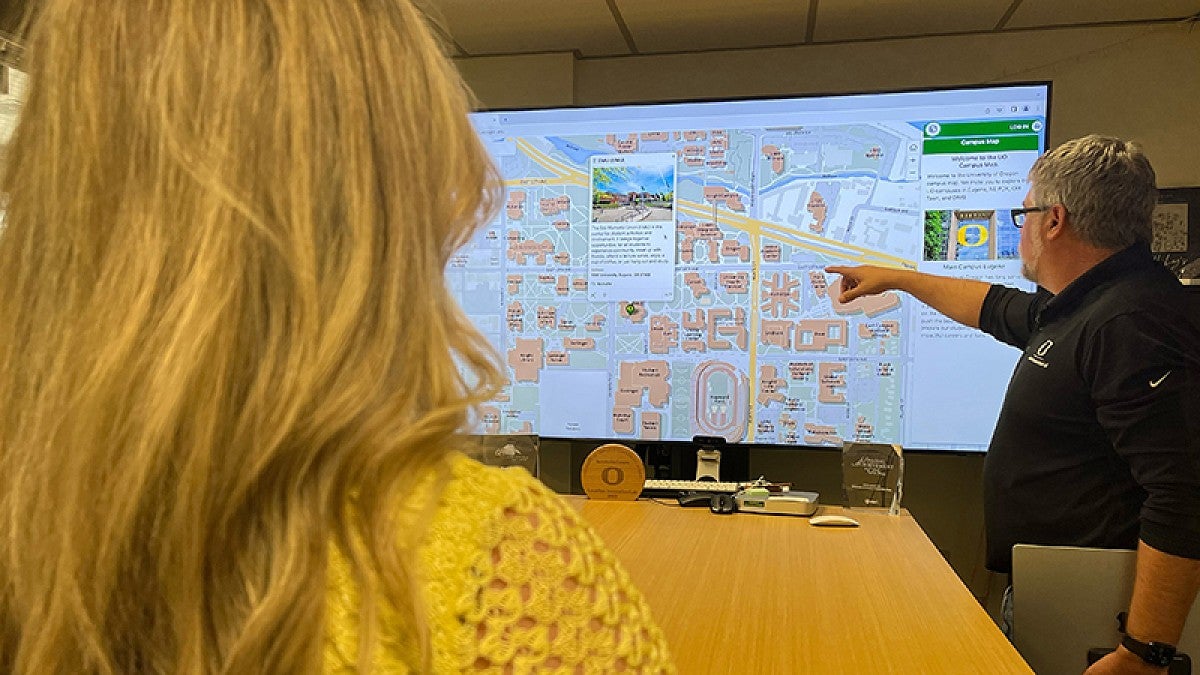The University of Oregon’s campus map received major updates this week, including in-depth indoor views, more comprehensive search, improved functionality on mobile devices, and customizable user settings.
The UO has 30,000-plus rooms and 375 buildings across multiple campuses. To improve search and ensure results are easy to locate, the Location Innovation Lab, publisher of the official UO campus maps, added more searchable points of interest and campus codes, similar to airport codes. Map users can move between UO campuses, follow search results inside buildings, move between floors, and create room-level maps.
Mobile usability was a major consideration for the upgrade. Mobile users will notice a new layout and menus that can be easily hidden or retrieved.
The campus map provides more than just a way to navigate the university. The Location Innovation Lab works with departments and classes across campus to develop software applications that display resources and tools layered on the base map.
A food app, which displays dining options and coffee shops, has joined other map apps that identify electric vehicle charging stations, all-gender restrooms, water bottle fill stations, and construction impacts.
UO students and employees who login to the campus map will find additional features, including the ability to favorite map apps making them faster to access. That also is how students will find the My Class Map, which shows the locations of their current term classes.
“It’s something we take a lot of pride in. No other campus has a mapping system like this” said Ken Kato, Location Innovation Lab director. “We routinely engage with industry partners and other institutions looking to learn from our approach and support organizational resilience.”
The underlying technology of the campus map is the backbone for a suite of homegrown custom software applications that run behind the scenes to improve efficiency and safety at the UO. Those applications have routed more than 95,000 room-level calls for service and 100,000 Leftover Textover notifications.
In recent years the campus map has had a dramatic increase in traffic, with more than 1 million visits last year. The increase in views, paired with the need to create new maps and software applications to support the northeast Portland campus, led to a larger reengineering of the campus map.
Learn more about the campus map and the Location Innovation Lab on the Safety and Risk Services website.
—By Amy Shadell, Safety and Risk Services


